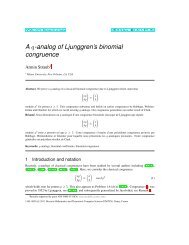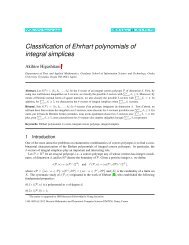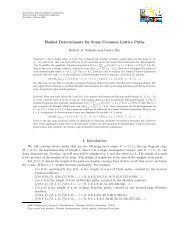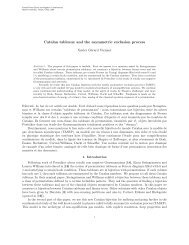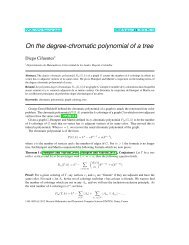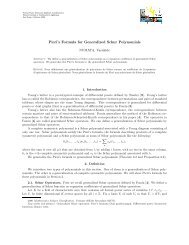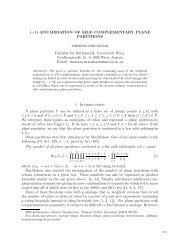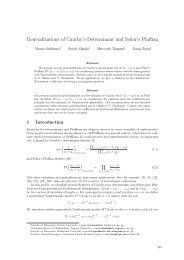Euler's partition theorem and the combinatorics of -sequences
Euler's partition theorem and the combinatorics of -sequences
Euler's partition theorem and the combinatorics of -sequences
Create successful ePaper yourself
Turn your PDF publications into a flip-book with our unique Google optimized e-Paper software.
l = 3<br />
The l-Euler <strong><strong>the</strong>orem</strong> [BME2]: The number <strong>of</strong> <strong>partition</strong>s <strong>of</strong> an<br />
integer N into parts from <strong>the</strong> set<br />
{0 + 1, 1 + 3, 3 + 8, . . .} = {1, 4, 11, 29, . . .}<br />
is <strong>the</strong> same as <strong>the</strong> number <strong>of</strong> <strong>partition</strong>s <strong>of</strong> N in which <strong>the</strong> ratio <strong>of</strong><br />
consecutive parts is greater than<br />
c 3 = 3 + √ 3 2 − 4<br />
2<br />
= (3 + √ 5)/2



